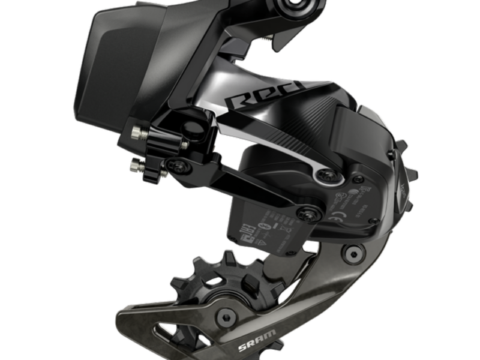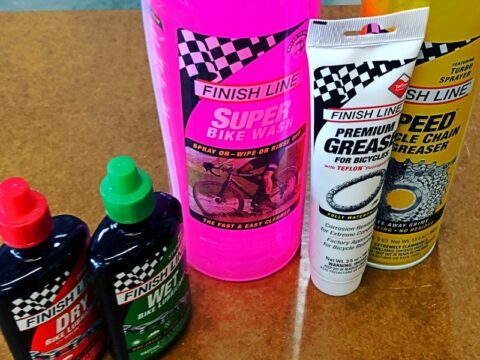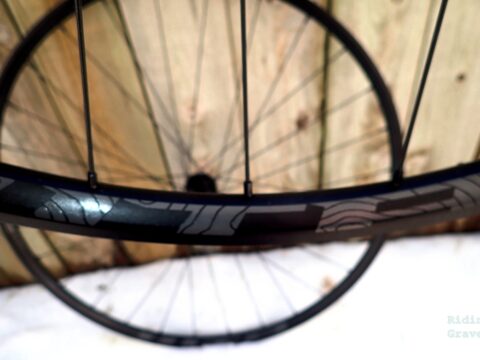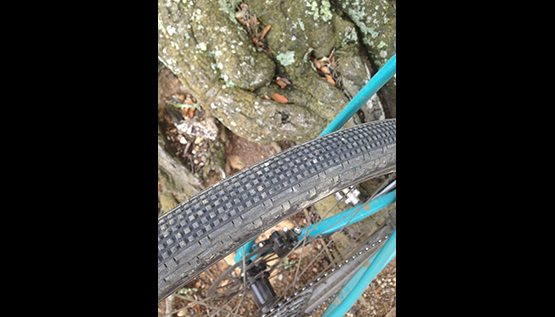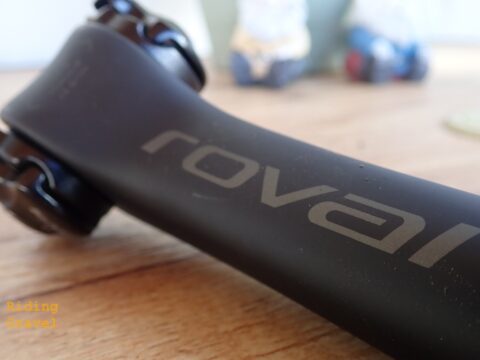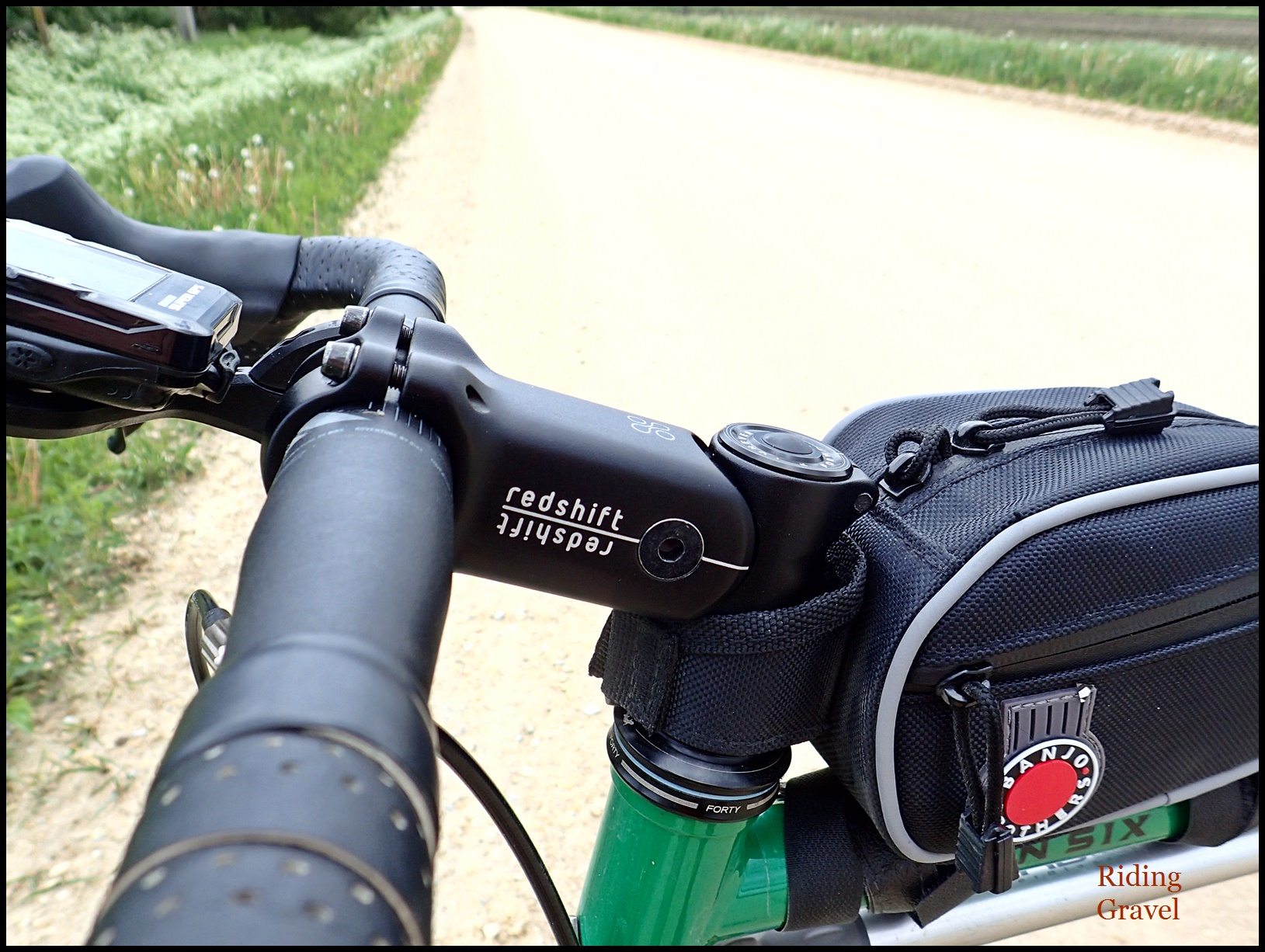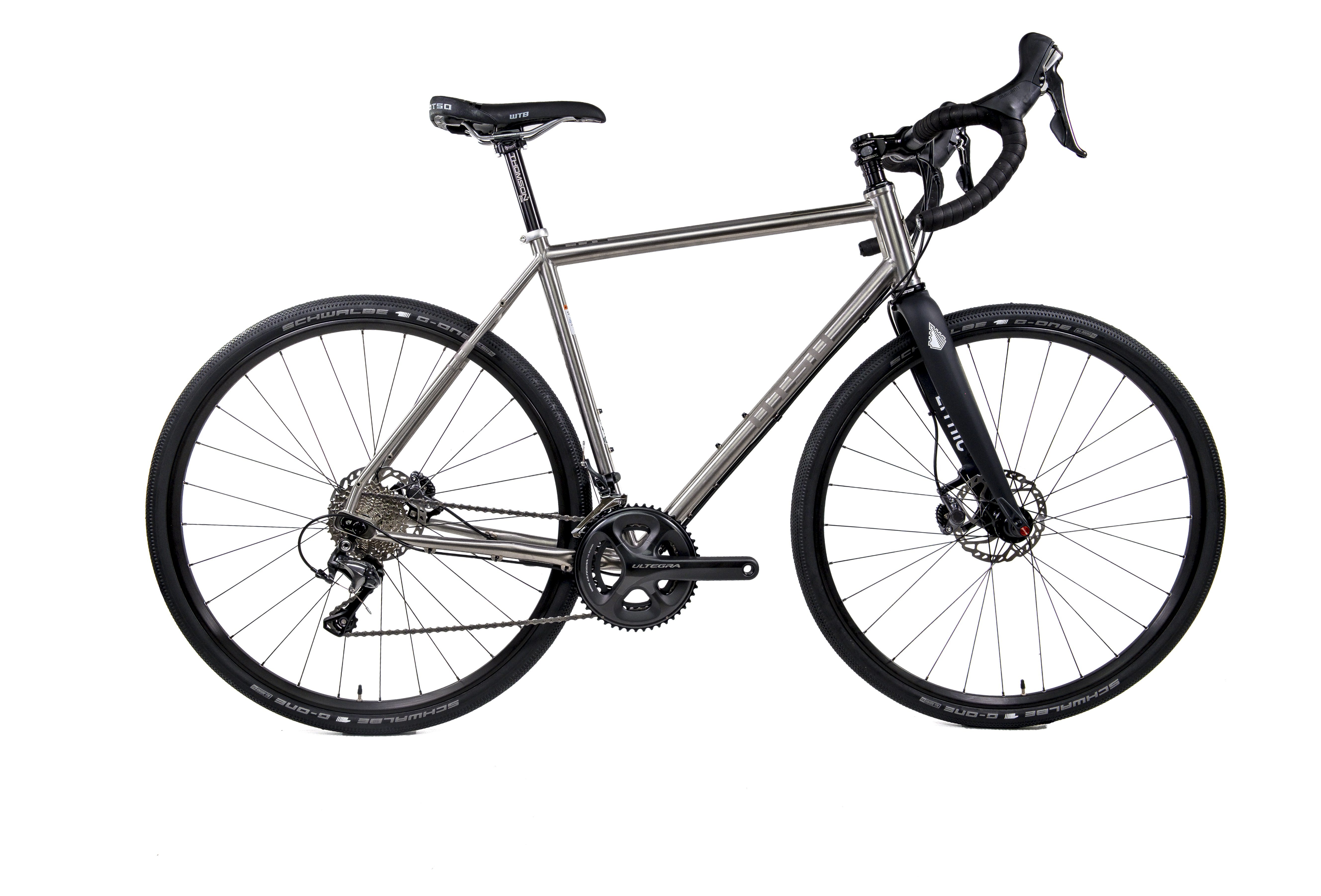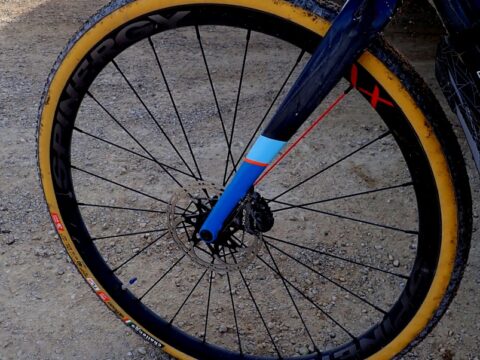Q & A With Enduro Bearings’ Matt Harvey – by Grannygear
Enduro Bearings
Bearings. Those hidden, greasy, spinning balls of mystery. Who can really know them? Well, someone like Enduro Bearings. That’s who. I have heard that company name whispered in low, even, tones, typically reserved for those ‘in the know’, like the way you would speak of a certain wine vintage or a revered playwright.
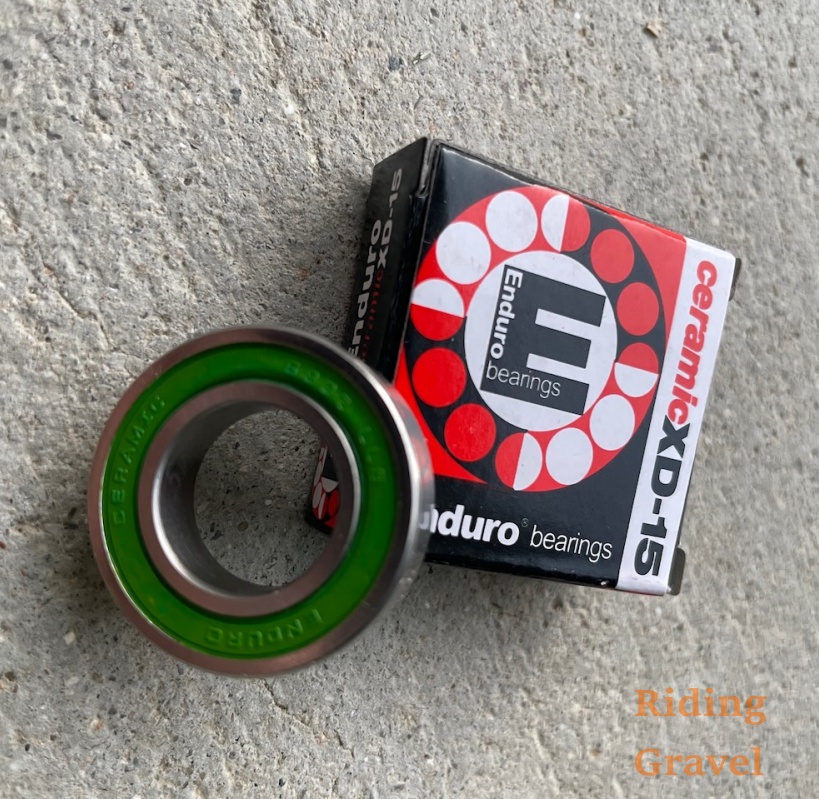
“Well, those are Enduro Bearings in that bottom bracket”, followed by a knowing nod of the collective heads in the room. ‘Nuff said.
But why is that? And really why do we care about the name on our bearings? Aren’t they all the same under those seals? They all pretty much look the same. Just what does set one bearing apart from another? And what about ceramic bearings? When is steel not good enough?
So I reached out to Matt Harvey the Co Founder at Enduro Bearing to see if we can get to know them a bit better and in the process, get to know bearings, an integral part of every bicycle, a little bit better too.
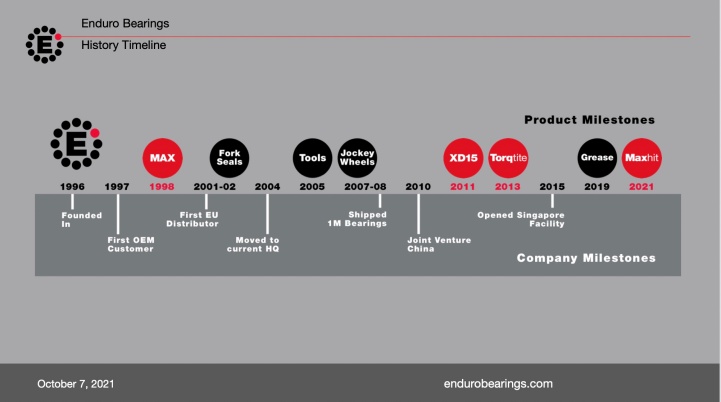
RG – I read your bio on your website, or at least how the company began. It seems that it was born, like so many
companies, from necessity, even if it was to fix forklifts. Lucky for us that that the founders were also bike guys!
MH – Yes, I’ve worked in bike shops since I was 13. My business partner Mike, I met in another bike shop when he was 16. He was already fixing forklifts at his dad’s business and wrenching bikes too. Some years later he was making larger
bearings for forklifts on his lathe in Emeryville for jobs they had, and then extras to sell to other shops looking for them. This grew into a business that we partnered up on and I set out working on developing bicycle specific bearings. When forklift bearing production started to take off, White Industries took over making quite a few outer races for us while I was supplying them with cartridge bearings. I had worked there previously and I think they were my first customer.
RG – Enduro Bearing HQ has to be a sterile, ultra modern facility with gleaming cubicles and robotic machines churning
out perfect bearings without a human hand ever touching them. But I hear that it is quite a bit more down to earth than that?
MH – Ha!, well, our facility in Singapore looks like that, but our warehouse in Oakland is the former 7 Up bottling plant dating back to the 1930’s. We have Mike’s original lathe here to do some little jobs or prototype work, but it’s not really a good idea to grind bearings in the same place you store them. We have our USA facility in Gilroy California. Our warehouse is an interesting walk back in time, but we do have internet and our computers are solid state.
RG – Back when you started, what did you guys see in the existing bearing market for bikes that was ripe for
improvement?
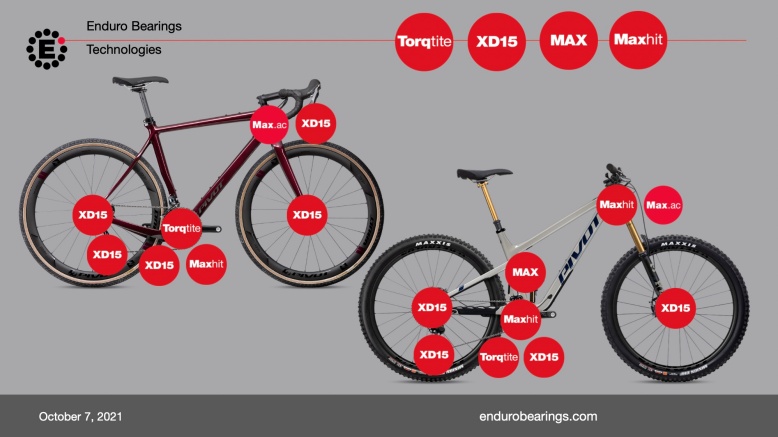
MH – When we started Enduro bearings in the mid 90’s, most hub, headset, and bottom bearings were still cup and cone design and most pivot bearings in suspension bikes were plane bearings or bushings. Some brands used cartridge bearings in their bottom brackets, hubs or headsets, but these were the exception and more high end. None of the bearings that these brands used were made specifically for their task, they were off the shelf electric motor bearings, or aviation control bearings that could be used in bicycles. I was already thinking about improved bicycle specific bearings as product manager at Fisher and Bianchi Bicycles, but I could not find these nor get them made. For instance, I contacted a bearing company in Japan for some cross roller bearings for a Bianchi downhill prototype headset. I finally was able to wrangle a pair out of them, but I had to grind them myself to make them work and fit the bike. When I asked them about 1,000 custom pieces, they said the minimum was 100,000. And that was that, next project!
RG – When I began riding bikes, ‘cup and cone’ was the norm for decent quality hubs. Bearings were loose and free to spin to their hearts content. What happened to shift pretty much everything to the precision sealed bearing world that we now live in? I remember those hubs, like Shimano XTR or Dura Ace, as being incredibly smooth and free spinning.
MH – They work great in many regards and there is nothing wrong with that design. In fact, the first precision bearing cup and cone hubs made were for bicycles in the late 1860’s by Aeolus and Rudge. I think the resistance to using them since has been their heavier weight and then the knowledge of how to adjust them correctly. Using cone wrenches correctly to get them dialed in takes some practice; to center the axle and then locking down the nuts so when it is further compressed in the fork ends the adjustment is, as you say, smooth and free spinning. And getting that without extra play I might add. Utilizing cartridge bearings you can more easily use lightweight aluminum axles with machined stops to locate the bearings. You simply press the bearings into the shell or driver, and lock down the axle caps or
push the axle caps on. There is no adjustment or preload usually necessary. Our first XD15 ceramic bottom bracket we introduced 10 years ago was cup and cone style. It is bomb proof and will last almost forever if adjusted properly. The
continuous phone calls regarding their adjustment however told us to change to a cartridge bearing design and that solved the phone problem.
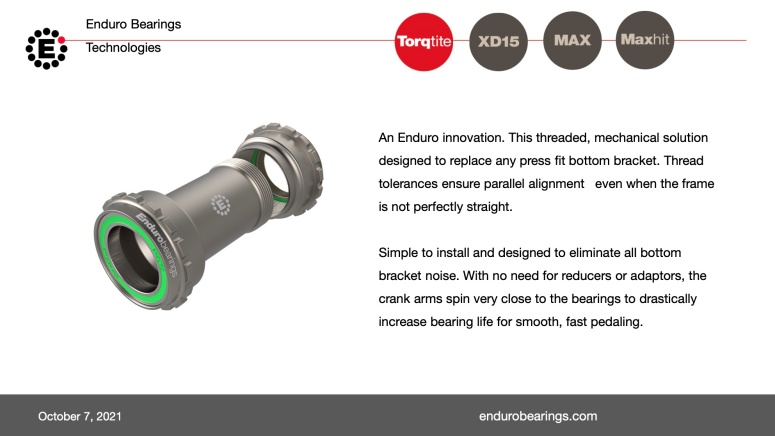
RG – What makes for a ‘better’ bearing? Is it materials or design or the right bearing in the right place?
MH – Simply stated, you need all 3 of those. Materials is often overlooked or not available, but if you start with lousy flour you will get lousy bread. So the steel and ceramic must be homogenous and clean material to get the finish and consistency you want for the end product of balls and races. Not all steels are the same for instance, far from it. 52100 steel, which is the most common steel used for bearings is a high carbon chromium steel. The grades available range from excellent to terrible; ‘Terrible’ meaning that there are pollutants and multiple interstices of carbides or formations resulting in early failure at those points.
RG – The industry talks about ABEC ratings and that seems great and I believe that speaks to the quality of a bearing, but should we also be talking, and asking about load ratings more? If we should why do you think the industry talks about ABEC rather than load?
MH – ABEC stands for the “Annular Bearing Engineers Committee” and was established in the US 50 years ago as a method for rating the accuracy and tolerance of bearings. There are 5 accepted levels, 1,3,5,7 and 9, with the highest number being the most accurate and precise bearing. This system was developed when the common tolerance standards of bearings was quite a bit lower and the main reason was for high speed bearings, that is over 10,000 RPM. While largely unknown by the public at first, skateboard bearing companies 30 years ago began popularizing the ABEC ratings in the quest and marketing of faster wheels. While ABEC ratings can tell you something about the accuracy of the bearing, it has little to do with the load ratings or long term performance qualities of the bearing. For instance, an ABEC 7 bearing may pass the noise test standard at 20-30K RPM, out of round tolerance, inner diameter tolerance, etc., but it may have smaller balls with shallow grooves type design which will not support the load requirements of a bottom bracket bearing and will wear out quickly. The forces on the two bottom bracket bearings must resist uneven human pedaling motions, landing jumps, cornering with one side loaded, all sorts of uneven forces called “Axial loads” or loads from any direction. In this case, what is really important is larger balls with deep grooves to support axial loads and last a long time rolling smoothly. With larger balls and deeper grooves, it is more difficult for this design to pass the higher ABEC testing because of the increased surface contact support of this design. Bottom bracket bearings rarely see 120 RPM, nowhere near the thousands of RPM of a router for instance, so the noise testing of high ABEC ratings really is not pertinent. To make use of all of the tolerances of a high ABEC rated bearing, the bearings must be mounted into a ground surface blind hole with precision ground axles or spindles. Once mounted into a machined aluminum hub, most high ABEC rated bearings are no longer at the same level of precision. We have found that ABEC 5 is the highest level required and matched to the precision level of the best components produced in the industry. ABEC 7 and ABEC 9 bearings generally are used in CNC mills and grinding equipment, sometimes used to make bearings.
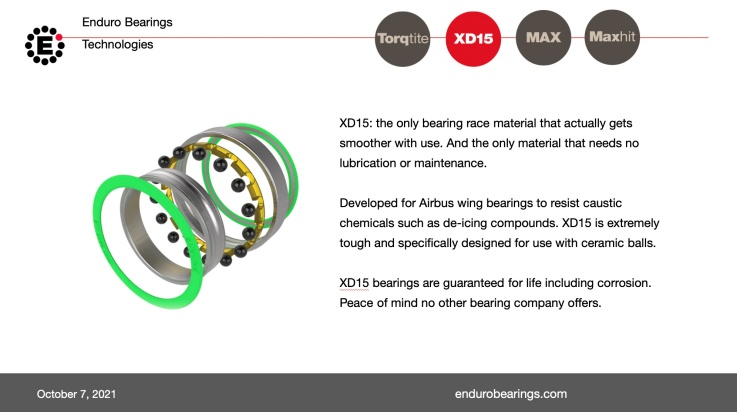
RG – Ceramic. I have read some pretty qualified person’s opinions that a ceramic bearing on a bike application is a waste of money as the RPM’s are too low to matter (efficiency wise) to justify the cost. And then there are the cheap ceramic bearings from China that are actually slower over time than a good steel bearing. What is the deal here?
MH – When ceramic hybrid bearings (steel races, ceramic balls) were first being introduced into the bicycle industry, there was a lot of hype regarding their improvements and wattage gains. I really didn’t buy into it, but we did start testing and making some of our own. Our early versions were not as good as our all steel bearings and they would fail or wear out early. We began working on different heat treatments of the races along with cryogenic treatments which vastly improved the life of ceramic hybrid bearings. This process also led me to discover that there was a “Super Steel” Airbus was using for their control bearings in the wings which could resist de-icing compound and not be serviced for years. A super steel that could could support ceramic balls and no lubrication for years without ever wearing out! I began my search for this steel and had my partner who speaks German, call the foundry. But they basically hung up. Our needs, even at best is a couple of hours of production, and aviation uses all the XD15 they make. Then I was at Interbike many years ago and a guy came up and said the magic words “Nitrogen Stainless Steel”. I had finally found a bike enthusiast that worked for the French mill and we’ve been working together ever since. XD15 is perfect for working with ceramic balls, literally made for each other. The only bearing that improves the race smoothness with time as you use it. So getting back to the previous point, you need to start with the best materials to get the best product.
RG – I just “re-bearinged” a rear hub that had gotten a bit rough over time. How does one know it’s time to replace a bearing? Or can we just open the bearing and re-grease and re-seal?
MH – Sometimes the bearing can simply be removed, seals removed, washed out, re-greased and replaced. I still do it all the time for people, but some don’t want to spend the time and just put new ones in. If it is still rough after you’ve done this, it is probably pitted and needs to be replaced anyway. One way to tell before you go to all of the trouble, is to remove the bearing and slowly turn it on your finger making mental note of where the rough spots are. If they are in the same place every time, it is a pit from galling. If the rough spots move around, that is grit moving around inside and you can probably just clean it out.
RG – I see that there are bottom brackets and headsets from Enduro now.
MH – We have had bottom brackets for years now, but we have never been a big player. We have always supplied bearings to many factories making bottom brackets and headsets, but we are finally shining the light on our own now. What I’m really excited about is our Maxhit line of headset and bottom brackets where the component IS the bearing. We have eliminated the aluminum cups and by that, have simplified the design with improvements to the life of the bearing as well as eliminating points of creaking and noises. As a bearing company, we were able to do this with the engineers I have access too.
RG – Is there anything else we can touch on that I did not mention?
MH – Another company recently announced they will have Solid Lube pivot bearings available sometime next year, however we have had them available for sale for 6 months now in about a dozen sizes. We have been testing solid lube bearings for 3 years now, but we are careful to prove the product before offering it. Actually, we supplied solid lube bearings as early as 1999 for industrial applications, but the formulation of the polymers for bicycle application has been tricky to get it right. Ours are available at a reasonable price too, that was another challenge to get past as well.
For more on Enduro Bearings see their website here: https://www.endurobearings.com/
We’d like to thank Matt Harvey and Enduro Bearings for the information and for the time answering a bike nerd’s questions about bearings.


